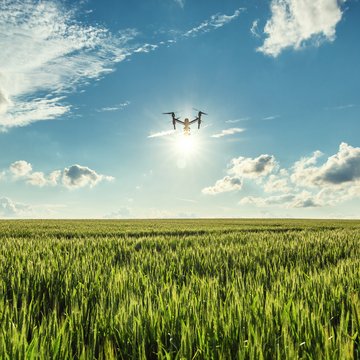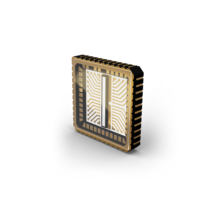Building LiDAR Systems
Choose the Right Components to Build a LiDAR System
Where to use LiDAR systems.
LiDAR systems have a wide range of use cases from measuring the distance of an object, to complex 3D models to create digital twins, LiDAR is a remote sensing technology that can assist in detecting targets.
Long-range and short-range LiDAR.
Regardless of the specific use case, both long-range and short-range LiDAR systems are available in the market. Each of the systems need similar components but with (very) different specifications.
The perfect match.
LASER COMPONENTS takes scientific and industrial experience to help system integrators find the best match of emitters and detectors for their needs, even with custom products for unique requirements.

Click here
State-of-the-art Technology
Reliable TIME-OF-FLIGHT MEASUREMENTS


LiDAR measurements emit several thousand laser pulses per second. Each pulse lasts only a few nanoseconds.
The distance to the obstacle can be determined by the difference in transit time between the outgoing signal and the incoming reflection, often referred as the time-of-flight (ToF) methodology.
Since PLDs emit beams at an interval of a few nanoseconds and because nothing is faster than light, LiDAR provides reliable information in the shortest possible amount of time.
Areas of Use
What can be measured?
LASER COMPONENTS’ portfolio offers a variety of high-end customizable PLD and APD options. With the right components, LiDAR can capture accurate measurements in a wide range of environments to generate 3D point clouds that represent vast terrains or floor plans for indoor inspection. For autonomous driving, an object might be moving, requiring quick, responsive, and reliable LiDAR systems to ensure the safety of the driver and those on the road. With LiDAR, even gases like methane can be monitored though differential-LiDAR methods to keep the environmental impacts controlled.
Some popular areas of use for LiDAR systems include:
- Architecture & Building Design
- Gas Mapping
- Range finding
- Telemetry
- Naval automated position control
- Presence detection
- Atmospheric LiDAR
- Forest agriculture
- Tomography medical
- Topography
- Artificial Reality (AR) / Virtual Reality (VR)
- Automotive
- Ophthalmology
- Defense & Aerospace
- Machine Vision
- Space


Piercing through the Jungle
Optoelectronic LiDAR measuring uncovers the secrets of ancient civilizations.
When you go on a journey, you hope for an extraordinary experience. The allure of distant countries lies in their exotic landscapes, unfamiliar customs, and remains of long-forgotten advanced civilizations. Historical sites such as Angkor Wat, Machu Picchu, and Tikal (see photo) have proven to be real tourist magnets – and not all secrets of the past have been revealed yet.
Today, laser technology provides archaeologists with information of which they were previously unaware. Just recently, new discoveries about the Maya have caused a sensation.

Science Fiction was YesterdaY
Drones in Fire Department Operations
Drones are unmanned aerial vehicles (UAVs) that can be used privately or commercially. UAV systems are already used today in rescue missions. In the most straightforward fire department operations, they are used to localize the source of the fire; this is especially useful in forest fires when initiating targeted fire-fighting operations. The U.S.A. has already gained positive results in this respect.
Professional drones, fly autonomously; therefore, high demands are placed on their safety systems.
Types of LiDAR
with specific advantages
+ Long-range LiDAR. For many well-known applications, long-range LiDAR is what comes to mind. In outdoor environments, vehicles will often require long-range LiDAR for fast-moving targets, such as in automotive systems. Additionally, aerial vehicles, used in applications like altimetry, remote sensing, and precision agriculture using longer wavelengths capture information on crops below with less interference from clouds and other atmospheric conditions.
+ Short-range LiDAR. However, in industrial environments, short-range LiDAR can be a better solution when it comes to minimizing power requirements. A factory setting can benefit from the lower power, size, and cost requirements of a short-range system because it can be scaled easier depending on the needs of the application such as automated doors or safety curtains. Where an automotive application might require a 250-meter distance, automated robotics in close quarters might only need to detect other objects within one meter.

Scanning Lidar
By affixing a laser and a receiver to the base of the LiDAR system, a spinning head containing a motor and a mirror is used to emit and detect the laser light. The servo motor adjusts the mirror to capture a vertical field of view (FoV).
A LiDAR system will horizontally rotate 360° to capture a 3D-point cloud. A high-speed PLD sends out laser pulses which are reflected by the surrounding environment, that finally reach the photodetector on a mechanically rotating platform.
By using this type of LiDAR a solution can reliably use one LiDAR to cover an area instead of using multiple units. The lasers used in these systems use IR wavelengths, commonly at 905 nm for high-volume, commercial, industrial and customer application or 1550 nm for higher-resolution, longer distance measurements in outdoor applications.

Solid-state Lidar
Instead of using a mechanical solution, a solid-state LiDAR uses semiconductor solutions to scan or steer light through a scene instead of conventional motors. The pulsed laser is scanned across a FoV by using Micro-Electromechanical System (MEMS) or an Optical Phased Array (OPA).
With MEMS a mirror is used to scan an environment while an OPA is designed to be a fully solid-state solution with no moving parts by electronically adjusting the direction of the laser beam.

Flash LiDAR
Unique among the LiDAR solutions, flash LiDAR illuminates the entire FoV at once and a photodetector array captures the return of the entire FoV at once, thus capturing a point cloud, similar to how a camera system captures an entire scene with one scan.
Flash LiDAR is mechanically / optically simple and potentially cheaper as there is no need for a beam steering mechanism. A powerful emitter and very sensitive photodetector array are needed for this solution.
Downloads
download useful documents
Products
to build precise LiDAR Systems
LiDAR systems should be dependable, small, and cost-effective at the same time. For systems that use aerial vehicles, such as drones it is important to consider Size, Weight, and Power consumption (SWaP) to ensure long-term operation. For manufacturers of laser-based measuring devices and optoelectronic components, this can be a great challenge.
LASER COMPONENTS manufactures all components for powerful and future-oriented LiDAR solutions in its ISO-certified production facilities. Customize the components with various options to best suit an application, such as Fast-Axis Correction (FAC) with micro-optics to ensure correct alignment of laser beams. PLDs with ultra-short pulses provide better resolution for distance measurement, in combination with highly sensitive APDs, even the smallest signals can be detected
Let us know!


LASER COMPONENTS Nordic AB
Product Selection
LASER COMPONENTS Nordic - Your competent partner for optical and optoelectronic components in Sweden, Norway, Finland, Denmark, and Iceland.
Welcome to LASER COMPONENTS Nordic AB, your expert for photonics components. Each product in our wide range of detectors, laser diodes, laser modules, optics, fiber optics, and more is worth every Crown (SEK). Our customized solutions cover all conceivable areas of application: from sensor technology to medical technology. You can reach us here:
Box 14001 / Skårs led 3
SE-400 20 Göteborg
Sweden
Phone: +46 (0)31 703 7173
Email: info(at)

















